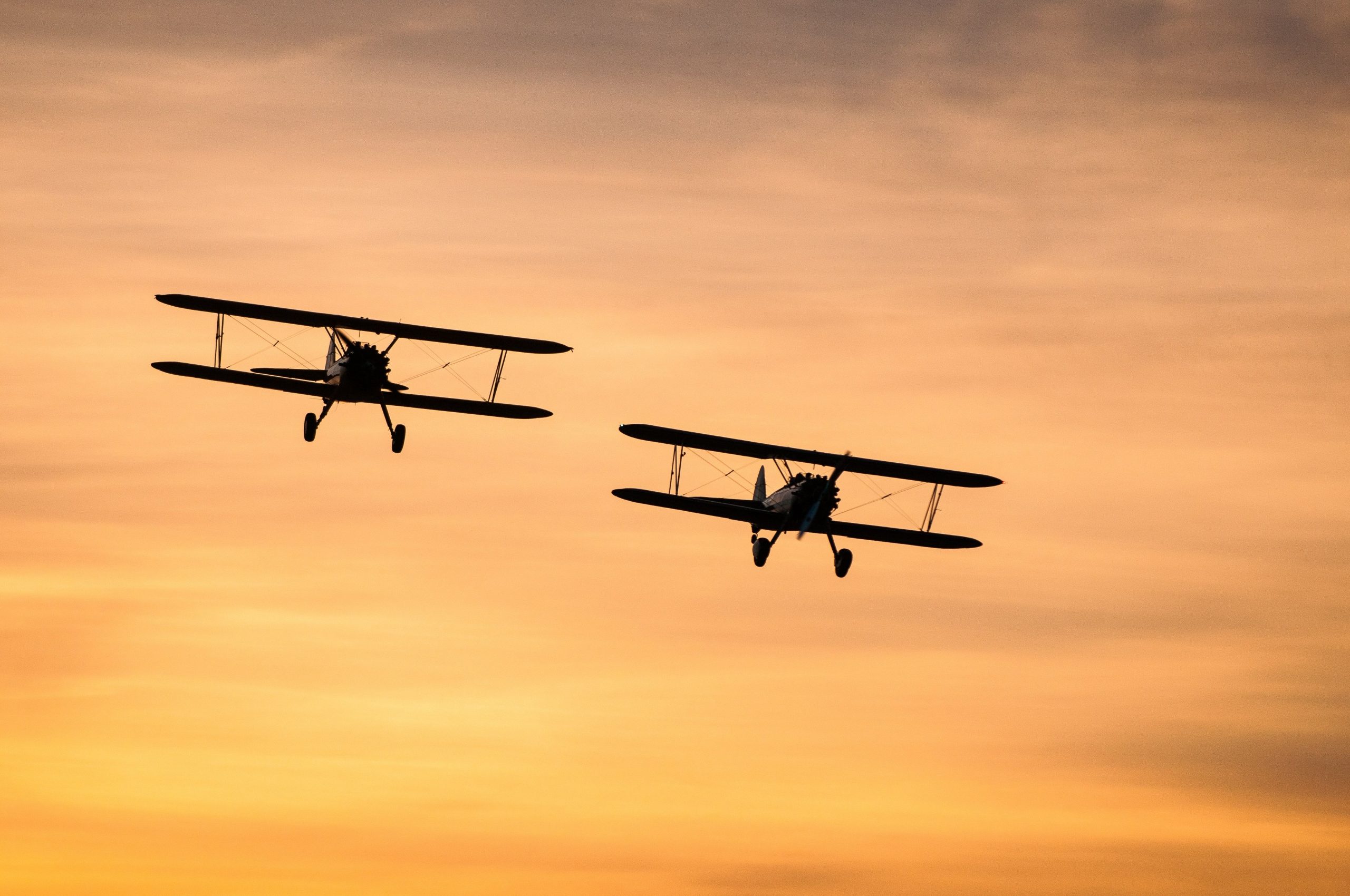Recruiting and training an employee is so expensive that his sudden departure can be a blow. And yet you have to be prepared for them, because staff turnover is a natural process. It's best if you can predict it and be one step ahead of your team.
Two definitions are most important in the context of this topic:
- staff turnover - is the movement of employees within and outside the company: their exchange, hiring and firing.
- employee retention - is the company's ability to retain employees.
Retention is measured by dividing the number of employees at the beginning of the period under review by the number of employees who are still working and then multiplying the result by one hundred. So if out of 100 employed people "stayed" 70, we are talking about retention at the level of 70 percent. We do not consider new employees. Retention can be measured at any time - after the trial period, quarter to quarter, year to year etc.
Your employees are leaving?
Check the possibilities of employer branding!
Staff turnover - definition
Staff turnover, understood as the process of replacing employees in a given position in a company, is part of the process of redeploying the already employed and newly recruited workforce. Employee turnover can be:
- forced or voluntary,
- desired or undesirable,
- influencing the organization positively (supporting its development) or negatively (reducing the value of human capital).
Voluntary staff turnover is one of the key indicators for the smooth operation of a company. It can adversely affect the development of the company. It can also manifest itself in:
- high costs of acquiring and implementing new employees,
- decrease in the work efficiency of individual teams,
- lower ability to create innovation.
Staff turnover is also associated with numerous costs of lost value related to:
- loss of knowledge of departing employees,
- downtime in performing certain tasks,
- overload and negative moods among other employees,
- a decline in efficiency, and thus the company's competitiveness.
Staff turnover It therefore entails significant costs, both direct and indirect. Explicit staff turnover is currently one of the basic characteristics describing the Polish labour market. Increasing turnover is mainly influenced by decreasing unemployment, giving employees more power in the labour market. More jobs mean that the employee sees more opportunities to find work. Not only a better paid one, but also one that more closely matches his or her expectations.
Staff turnover - quotes
The value of employees as the company's primary resource is convinced, among others, by Richard Branson, who often stresses that "Customers do not come first. Employees come first. If you take care of your employees, they will take care of your customers". All activities that an organisation undertakes, aimed at current and potential employees, to build its image as an attractive employer and to support its strategic business goals are now a 'must have' for every organisation.
Competition on the labor market for the best employees is increasing. That is why more and more organizations pay more attention to the image of the company as an employer. Companies consciously invest in activities building this image. In addition to the declared increase in wages, they pay more and more attention to the non-financial aspects of employment. These are employment stability, participation in interesting projects, career development opportunities or a friendly work environment. As Richard Branson notes: “Train people well enough to let them go. Treat them well enough that they won't want to do it.
Staff turnover does not come from nowhere. This is proven by another famous quote by Richard Branson - "Being a good listener is key to being a good leader". Before you make specific decisions to implement certain motivational models, analyse your company's current situation. Listening is key to retaining the best employees. To make the necessary changes to create your company as a noteworthy employer, answer the following questions honestly:
- Do the current image and recruitment materials show the truth about your company?
- What about salaries and other non-wage benefits for your organization in relation to the competition?
- What are your employees complaining about the most?
According to research on the reasons for changing jobs among employees, the main reason for resignation from the current job is the higher salary of the new employer. The next places are: the employee's willingness to develop professionally, changing jobs due to a more favorable form of employment and dissatisfaction with the previous employer, or interpersonal conflicts. As early as the beginning of the 20th century, Henry Ford noted that "the ambition of the employer as a leader should be to pay better wages than in any other similar enterprise, and the ambition of the worker should be to make it possible."
As Bill Gates emphasized - "If it is not believed that all employees can contribute to the company's success, all the technology in the world will not help to increase their competences." For years, organizations have been looking for a sustainable way to achieve success. The answer may be to place greater emphasis on the intangible resources of the organization, which are its employees. It's high time to take responsibility for your employees and potential candidates. Specific people are always responsible for the employer's brand, both inside and outside the company.

Main causes of staff fluctuation
Staff turnover is a natural occurrence - as long as it does not disrupt the day-to-day running of your business. You have to expect that some people will leave their jobs. Others will dream of new prospects. As part of fluctuations There is also talk of employees moving from department to department, one office to another, etc. If you don't allow employees to change jobs or get promoted within the company structure, they are likely to start looking for opportunities outside the company.
Employees may leave the enterprise for a variety of reasons. Both due to low wages, lack of promotion opportunities, poor working conditions, lack or low social benefits, etc., and many other, less rational reasons. From the observations of the contemporary market it is clear that traditional methods of motivating employees are not enough. It is not enough to meet the expectations of employees and significantly increase their job satisfaction. Additionally, the high degree of social diversity makes it impossible to use uniform tools for influencing employees.
Staff turnover favours today's working model, further reinforced during the pandemic. Rarely does anyone today work in one place for 30 years. It has become the norm to work in many places at the same time, a nomadic mode of employment and loose ties with the employer. In short staff turnover is embedded in the current labour market and this is unlikely to change in the coming years.

Employees are the most loyal to companies that have a clear and attractive vision or mission. If your company has not developed such standards, employees may be confused and move away to the competition that sends out more readable messages.
Staff turnover is most often not viewed positively. Some recruitment models are exceptions, such as the sieve model. In it, employees are supposed to 'churn' in fierce competition. At the end, those with the highest competence and resilience are left. However, even here you need to monitor the level of staff turnover and adjust the load level. Otherwise, you could be left without a single employee....
Interestingly, most employees change their employer for non-financial reasons, including disappointment with the scope of duties, lack of feedback on own work, lack of development prospects, unfair and ineffective organizational management system, excessive stress at work, imbalance between work and private life. It is therefore not easy to prevent employee turnover. Will high remuneration be a sufficient motivator for employees if they perceive the organizational culture as damaging their professional or personal development?
How has your staff fluctuation progress over the years?
At the turn of the 19th and 20th centuries, when the society was highly industrialized, employees avoided changing jobs, so enterprises did not take into account the needs of employees, which, in turn, employees did not manifest for fear of layoffs. As the economy developed, new workplaces were established and employees adapted better to changes, the market focused on employers was transforming into a market focused on employees, which resulted in changes in the approach of the organization to employees. Currently, enterprises are forced to fight for employees and compete with each other for their attention and meeting expectations. Employer branding came to the rescue - brand building strategy as an employer.
How to measure staff turnover?
Staff turnover is measured in two stages. The first is to identify the scale of the phenomenon. An indicator derived from the retention rate described above can be used here. Its inverse can be used to determine how many people have left the company. Unfortunately, it is not possible to say what level staff turnover is correct. This varies depending on the specific industry, location, length of contract and many other factors. However, if you regularly measure your company's turnover rate, you can spot when it starts to rise sharply and then you can take remedial action.
The second stage of measuring staff turnover is to investigate the causes of the phenomenon. Check how it differs staff turnover between departments. Perhaps this will allow you to draw initial conclusions? Also, consider which causes of turnover were avoidable and which were not. Retirements or departures after a probationary period should be taken into account when you are planning the functioning of the company. Factors over which you have little influence, such as an employee starting a family or moving away, fall into this category.

How can I prevent staff turnover?
Staff turnover must be taken into account even before the recruitment process is completed. Then you can hire employees who best fit with the vision and character of the company. Then they will fit in better with the team and there is less chance of them leaving quickly. This is also why it is so important to examine not only the skills, but also the soft skills that will ensure that the person in question coexists harmoniously with the boss and colleagues in the department. Of course, it is also important to appreciate the crew members. It is important that they feel they have a real impact on the company's operations.
Research shows that millennials and younger age groups are mostly determined to leave the workplace if they feel that another company is more diverse and pro-social. Openness to cultures, various degrees of disability, employment models and stages in the life of subordinates is slowly becoming the norm that employees expect.

Unnecessary staff turnover - how to prevent it?
Preventing unnecessary employee rotation is closely related to both the implemented incentive systems within the organization and the general situation on the labor market and the structure of society. An employee satisfied with their duties and remuneration for their performance, performs their work more efficiently and develops their skills more willingly, thus becoming an even more valuable team member.
An effective way to prevent unnecessary staff turnover and derive the greatest possible benefit from turnover, which we are unable to avoid, is properly implemented employer branding - the entirety of the company's internal and external activities related to managing the organisation's social potential, shaping its size and structure and improving it by creating favourable conditions for employees to become involved in the company's activities and increasing its market effectiveness, as well as attracting the right employees from the labour market.
By running employer branding, companies create their own personality profile based on the uniqueness of employees, their values, habits, norms, habits, as well as abilities and skills. The resources contributed by employees, appropriately shaped and developed by the organization, can be the basis for building an original and unique organizational culture, thanks to which it will be possible to combine all employees into a well-coordinated team, implementing the organization's goals together.
Negative effects of personnel changes
Recruiting an employee costs an average of £3-4,000. On average, it takes 42 days to fill a position. On top of that, there are also the costs of the training the person has received at the new workplace. No wonder you prefer to avoid staff turnover and associated expenses. It is said that it is much cheaper to keep an existing customer than to look for a new one and convince them of your services. The same principle applies in the HR world with regard to employees.
Minuses staff turnover can be felt on many levels. The company's image suffers when the same job advertisements appear time and time again and candidates begin to suspect that problems await them in this position. Confusion also has a demotivating effect on those who remain in the company. Even the best internal communication it will not make them feel confident when they have to greet new colleagues every few weeks in the place of the departed.
Large staff turnover is also bad PR. There have already been times when a company has had to issue PR messages to deal with the negative image effects of high staff turnover. Sometimes it is enough to change a little communication strategy problem. Other times, the entire company structure is reorganized to make sure that employees are happier. Regardless of which situation applies to your company, we will be happy to help you deal with the problem.
Importance of monitoring staff turnover
Staff turnover, i.e. the movement of employees in and out of the organisation, is an integral part of the functioning of any company. However, excessive employee turnover can lead to unforeseen costs, destabilise the team and reduce operational efficiency. This is why it is so important to regularly track employee turnover rates and react quickly to problems as they arise.
Fluctuation versus turnover - are they the same thing?
Deadlines staff turnover vs. turnover are often confused, although their meaning is different. Fluctuation includes both the departure of employees from the company and the admission of new people. Turnover, on the other hand, mainly refers to changes in positions within an organisation. These subtle differences are crucial for an accurate analysis of the HR situation. When considering the topic of turnover vs. fluctuation, it is worth remembering that both of these measures provide important information about the health of the team.
How do you count staff turnover?
The basic formula for employee turnover is based on the number of people leaving the company over a certain period of time, divided by the average number of employees and then multiplied by 100%. This provides an estimate of the percentage of change in the team. Staff turnover - how to count? This question often arises in the context of HR activities, as regular calculations of the indicator allow trends to be identified and retention problems to be prevented.
Why is staff turnover a challenge for companies?
Excessive staff turnover generates high costs related to recruitment, onboarding and training of new employees. It also affects team morale and process consistency. To minimise these negative effects, it makes sense to focus on building an attractive working environment that responds to employees' needs. The key is to provide a clear development path and open communication.
Building engagement through employer branding
Activities related to employer branding have a significant impact on reducing turnover. A consistent employer image, based on real values, attracts and retains employees. Cooperation with employer branding agency helps to plan a strategy that will differentiate the company from its competitors. Communicating workplace strengths becomes one of the most important elements in building an engaged team.
Summary
Conscious management staff turnover is an investment in the company's stability and growth. The right strategies, such as improving working conditions or building a consistent image, can reduce turnover rates and ensure long-term employee loyalty. Regardless of the challenges, an analysis of the differences between fluctuation vs. rotation and regular monitoring of indicators is the basis for effective human resources management.

